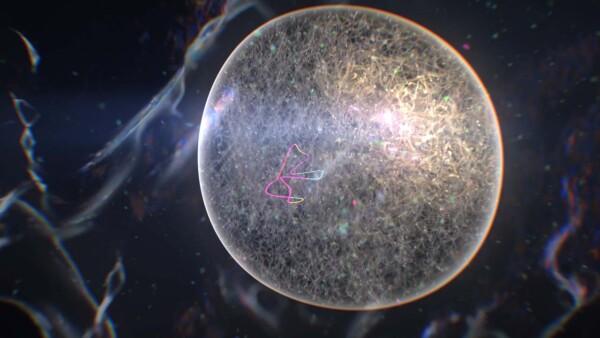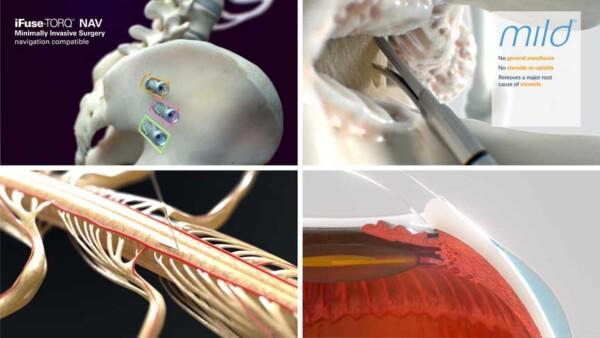Microverse Studios Wins Four Awards at the 2023 Association of Medical Illustrators Salon
Microverse was recognized with four honors at the Association of Medical Illustrators (AMI) annual conference this year. This recognition underscores the studio's commitment to delivering high-quality, scientifically accurate, and aesthetically compelling medical animations that provide value and contribute to advancements in the medical and scientific community.
Medical Animation Awards
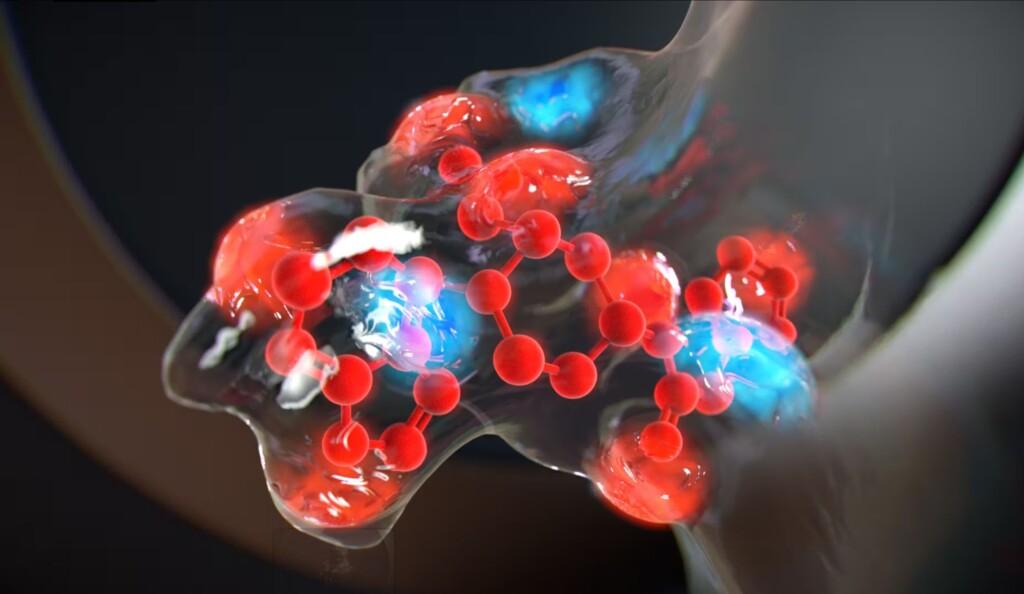
Molecular Simulation for Novel Drug Discovery
Award of Excellence
Professional Motion and Interactive Media
Ventus Therapeutics
Stephen Boyd, one of the studio's talented medical animators, received two Awards of Excellence for his elegant work this year. The first animation, The "Molecular Simulation for Novel Drug Discovery" for Ventus Therapeutics, describes how they simulate how water interacts with the binding pockets on a protein's surface, and then use that data to identify the best possible binders for that pocket from a library of trillions of known molecules. This is the second medical animation commissioned by the Ventus team.
Ventus Therapeutics is focused on discovering and developing novel medicines by targeting protein homeostasis. Recognizing the challenges associated with targeting traditionally undruggable proteins, Ventus leverages proprietary structural biotechnology platforms to access these therapeutic targets. Their mission centers on tapping into the unexplored potential of these difficult-to-drug proteins, aiming to create innovative treatments for a wide range of diseases.
Discover ResolvOME: The Next Step in Cancer Research
Award of Excellence
Professional Motion and Interactive Media
BioSkryb Genomics
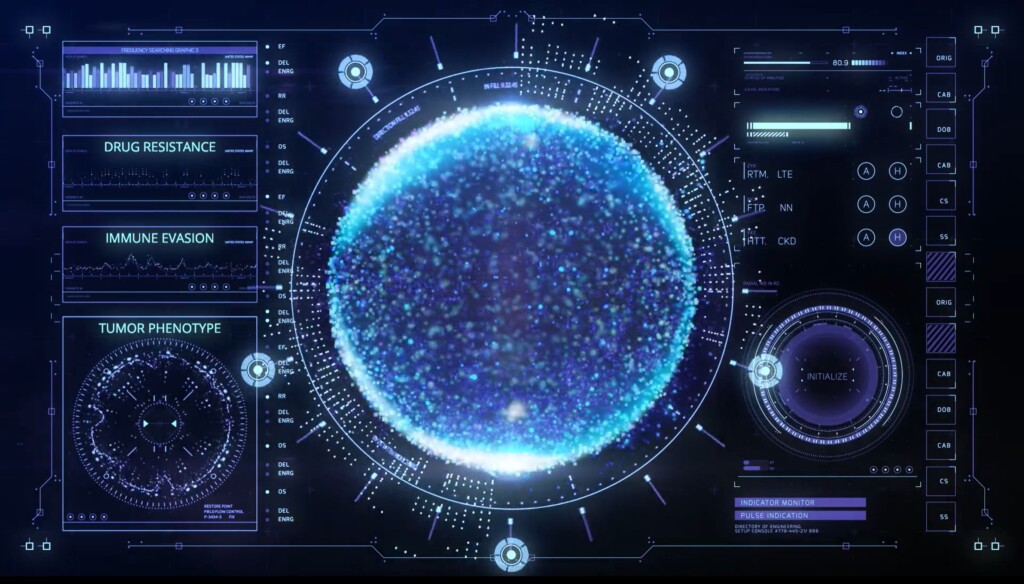
Stephen received his second Award of Excellence for "Discover ResolveOME: The Next Step in Cancer Research" for BioSkryb Genomics. This multi-award-winning medical animation showcases what Microverse Studios can do for the Contract Research Organization community. "Discover ResolvOME" describes their integrated discovery package that analyzes not only genome, but transcriptome of each individual cell in a sample. By doing so, they can gain deep insights about how cancers respond to therapies. This is the third of three animations BioSkryb has awarded to Microverse Studios.
BioSkryb Genomics is a biotechnology company that focuses on advancing genomic research and healthcare. With its proprietary Primary Template-directed Amplification (PTA) technology, the company seeks to generate high fidelity, high-resolution genomic data. This technology enables more accurate single-cell DNA sequencing and better characterization of the vast genomic diversity across different samples. Their mission revolves around ensuring that researchers and clinicians can access accurate genomic information to propel advances in disease understanding and treatment.
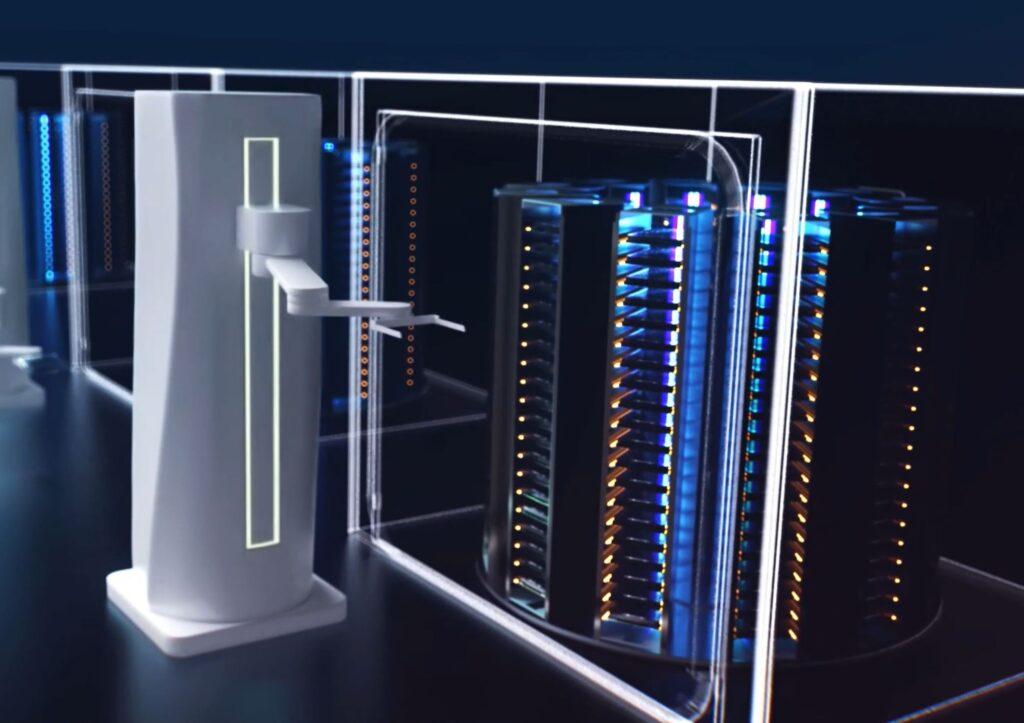
Optics-Free Cell Imaging at Scale
Award of Excellence
Professional Motion and Interactive Media
CytoTronics
Molly Huttner, another pivotal member of the Microverse Studios team, received an Award of Excellence for her biotech animation "Optics-Free Cell Imaging at Scale" for CytoTronics. This is the second CytroTronics production entrusted to Microverse. The animation explains their use of an ultra-high resolution nano-scale CMOS chip to read cell activity, and outlines their plans to do so at large scale in order to allow massively multiplexed data collection, enabling never-before-possible insights that will drive the next wave of drug discovery.
CytoTronics is at the forefront of bioelectronic medicine, aiming to provide novel therapeutic solutions. Their advanced bioelectronic devices and systems are tailored for real-time monitoring and modulation of cellular functions in a controlled manner. By delivering precise electrical signals to cells, they gather multiple types of data and can influence cellular behaviors and functions. The company's vision encompasses a future where bioelectronics plays a pivotal role in treating diseases, rehabilitating patients, and advancing the overall quality of life.
Programming the Pharmacophore
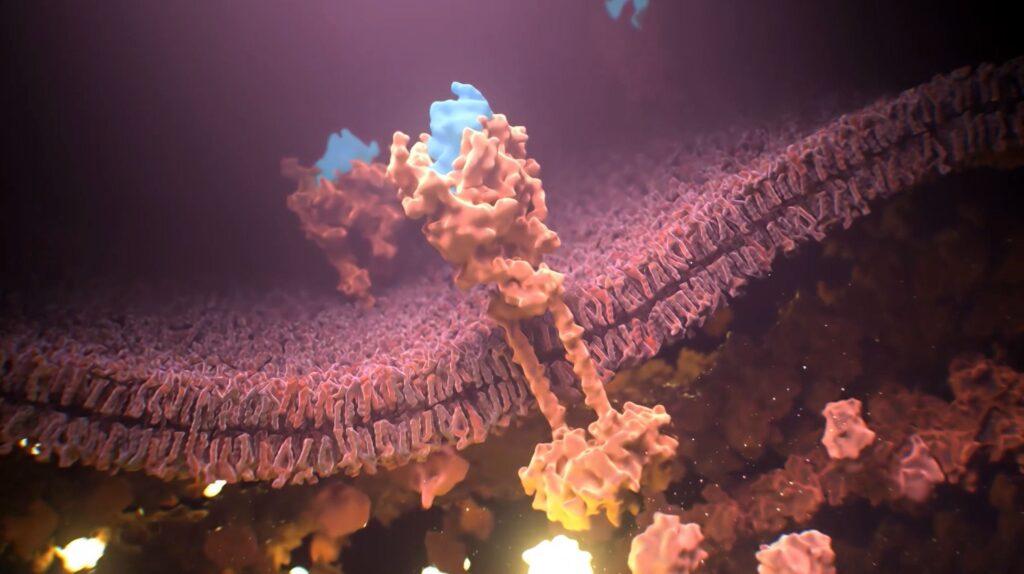
Finally, Cameron Slayden was honored with an Award of Merit for "Programming the Pharmacore" created for Metaphore Biothechnologies. This biotech animation describes how their new MIMiC™ platform predicts and defines the entire pharmacophore, or pocket-binder interface of a target interaction. Using this information, they then use AI and machine learning to design new binding peptides with more desirable features.
Metaphore Biotechnologies is a pioneering company in the realm of computational biology that blends machine learning and AI-guided molecular design with wet-lab gene expression and analysis. Their MIMiC™ platform drives unprecedented insights into molecular interactions to design new molecules precisely tuned for therapeutic benefit.
You might also like
- Scientific Animation and the Biotech Comeback: Lighting the Spark for Dormant Innovation
- AI in Medical Animation: A Game-Changer or Not Quite There Yet?
- How Medical Animation is Made and Why It’s Essential for Healthcare and Biotech
How Medical Animations Can Help You Raise Investment For Your Clinical Stage Pharmaceutical Company
The journey to bring a new drug to the market is a long and arduous one for any clinical stage pharmaceutical company. It requires substantial investments at various stages of development.
As an executive or founder, you constantly seek ways to effectively communicate the value of your product, especially when raising funds for research, clinical trials, and product distribution. One increasingly popular tool in this quest is the use of medical animations.
Understanding the Role of Medical Animations in the Clinical Stage
Medical animations bring scientific concepts and mechanisms of action to life, enabling your potential investors to better understand your pharmaceutical product. Here's how they do it:
- Visualize Complex Mechanisms: Medical animations can simplify and visually present complex biological processes and how your drug intervenes, making it easier to understand.
- Impactful Storytelling: The use of animation and graphics can help narrate the story of your drug's development journey, illustrating its unique proposition.
- Enhanced Engagement: With the increasing popularity of visual content, medical animations can significantly increase your audience's engagement levels.
Leveraging Medical Animations to Raise Investment
1. Distinctively Showcase Your Drug’s Mechanism of Action
For your clinical stage pharmaceutical company to raise investment, investors need to understand what makes your drug unique and valuable. Medical animations can illuminate the drug’s mechanism of action, showing how it interacts with the human body at the molecular level.
This visual explanation can help non-scientific investors understand the innovation your drug brings to the market, hence, making a compelling case for investment. Furthermore, these animations can also convey the potential health benefits and the overall impact of your drug on the medical field.
2. Demonstrate the Results of Preclinical and Clinical Trials
Medical animations can also be instrumental in communicating the results of your preclinical and clinical trials. These animations can illustrate changes in patients' health conditions and explain statistical data in an easily digestible format. They can be used to:
- Show how patient groups responded to the drug in different trial stages.
- Visualize any side effects observed and how they were managed.
- Compare the efficacy of your drug with existing solutions in the market.
By doing so, you give potential investors a clear picture of your drug’s potential, thus helping your clinical stage pharmaceutical company raise investment.
3. Illustrate the Market Potential and Positioning of Your Drug
Medical animations can also help you highlight the market potential of your drug. By visually demonstrating the size of the affected population and the potential impact of your drug, you can effectively communicate the investment opportunity to prospective investors.
Animations can also illustrate how your drug is positioned against competitors and why it could be a preferred choice. This form of communication can significantly influence the decision-making process of investors.
The Power of Medical Animations in Investor Presentations
Medical animations can be a powerful tool in investor presentations. When seeking to raise investment for your clinical stage pharmaceutical company, you want to leave a lasting impression. Here are a few ways animations can help:
- Grasp Attention: Medical animations can captivate your audience from the start, ensuring they engage with your presentation.
- Break Down Complexity: Animations can distill complex science into understandable visuals, making your pharmaceutical product more accessible to a wide range of investors.
- Create a Lasting Impression: Medical animations are not only informative but also memorable. They can create a lasting impression in the minds of investors, which can be beneficial when they're deciding on potential investments.
Conclusion
The use of medical animations represents a strategic tool that clinical stage pharmaceutical companies can use to raise investment. By visually presenting complex biological processes, demonstrating trial results, and illustrating market potential, medical animations can effectively convey the value proposition of your drug to potential investors.
With the rise of visual content and its impact on audience engagement, it’s time for pharmaceutical companies to leverage medical animations in their fundraising efforts. By doing so, you not only convey complex information in a digestible format but also leave a lasting impression that could be the difference in securing that crucial investment.
4 Common (and Costly) Mistakes to Avoid While Developing Your Medical Animation
Medical animations are worthy investments that deliver value across your business, but the truth is that high-quality 3D medical animation services are expensive. Add communication snafus and process hiccups to the mix, and the budget can quickly balloon. While our system is designed from the ground up to be able to accurately predict our costs from the beginning and avoid any scope creep, we’ve heard a lot of stories from our clients. In our nearly twenty years as a full-service scientific and medical animation studio, we’ve seen it all, but here are the four most common mistakes we work to help our clients avoid:
Mistake #1: Selecting a 3D Medical Animation Studio Without Scientific Expertise
This is a big one. Countless times we’ve had clients come to us after many months and dollars wasted on what turned out to be an unusable final product because they chose low-cost medical animators or ones without scientific expertise. When it comes to 3D medical animation services, you get what you pay for, so beware of lowball estimates—they’re a sign that they’re not paying experienced animators or those with graduate-level scientific education. Most commonly, we see a talented studio with a stellar portfolio falter because they lack the scientific expertise required to produce medically accurate animations that will survive the rigors of the scientific and legal review process. Best-case scenario, companies hiring non-scientifically trained studios should expect heavy hand holding throughout the process. Take it from us—hire a qualified 3D medical animation studio for the job.
Mistake #2: Not Keeping Your Medical and Legal Review Submission Guidelines Up Front Times in Mind During Scheduling
“That regulatory review process was a breeze!” said no one, ever. Seriously, plan for this like it’s the approval apocalypse. Even tiny errors can result in rejections, and big ones can explode production timelines, triggering vicious revision cycles that chip away at your team and take huge bites from the budget. This is sometimes an unavoidable feature of the review process, but when your timeline for deployment of your medical animation is critical, you have to factor these kinds of delays into your plan. To prevent this, meet with your legal team before starting work on your medical animation project.
Also, make sure you communicate submission guidelines for EVERY deliverable they’ll be reviewing with your medical animators so that they can keep things running smoothly on their end. Find out their submission days and turnaround time to ensure your production schedule reflects reality, and learn of any other potential pitfalls they foresee. Knowing these requirements up front and communicating them effectively to your team will go a long way to avoiding surprises in the review process. The last thing you want is for a project that once had plenty of time to switch to one with a tight deadline.
Mistake #3: Failing To Get Every Element Approved Before Moving Forward
There are three major deliverables in the medical animation development process: the script, the storyboards, and the final animation. On the 3D medical animation studio side, the production process is designed to ensure each deliverable is reviewed and approved before the next development phase can begin, but the various reviewing bodies on the client side sometimes creates complexities and communication chasms that allow minor items to fall through the cracks. Small oversights create big headaches, so make sure EVERY element is thoroughly reviewed before approving your studio’s deliverable.
For the script, this means all text, including voiceover narration and all words appearing on screen, both captions and labels. The storyboards show the narrative progression of the medical animation, shot by shot. It’s the blueprint the medical animators use to create the final product, so the action of every scene must be scrutinized in detail before giving approval. In the final phase of development, the animation process, changing the content can spiral costs for some studios. Make sure your approvals are bulletproof.
Mistake #4: Not Streamlining Feedback from Key Stakeholders
We’ve seen it before, and we’ll see it again—key stakeholders on the client side offering conflicting direction, or a rogue CEO coming in at the last minute to change key details, creating project upheaval. We can’t emphasize enough the importance of appointing a capable point person to lead the project on the client side, who can ensure that all stakeholders are involved in the review process. With so many departments weighing in, it’s essential for one person to be responsible for consolidating, confirming, and reconciling feedback from all stakeholders before communicating it to your development partner. When internal disagreement on the client side spills over into the development process, precious project hours are spent untangling confusion instead of creating groundbreaking medical animation. Know your stakeholders and make sure they’re in alignment!
Conclusion
The process of creating a high-quality medical animation is a complex, intricate, and costly endeavor. It demands not only artistic and technical skills but also a deep understanding of the illustrated scientific principle. To navigate this process successfully and economically, it's crucial to avoid common pitfalls. This includes selecting a 3D medical animation studio with scientific expertise, proactively managing your medical and legal review submission guidelines, ensuring meticulous approval of each development phase, and streamlining feedback from key stakeholders. By circumventing these common mistakes, businesses can effectively leverage the power of medical animations, resulting in cost-effective, impactful, and scientifically accurate visual tools that ultimately enhance the understanding of complex medical concepts.
You might also like


